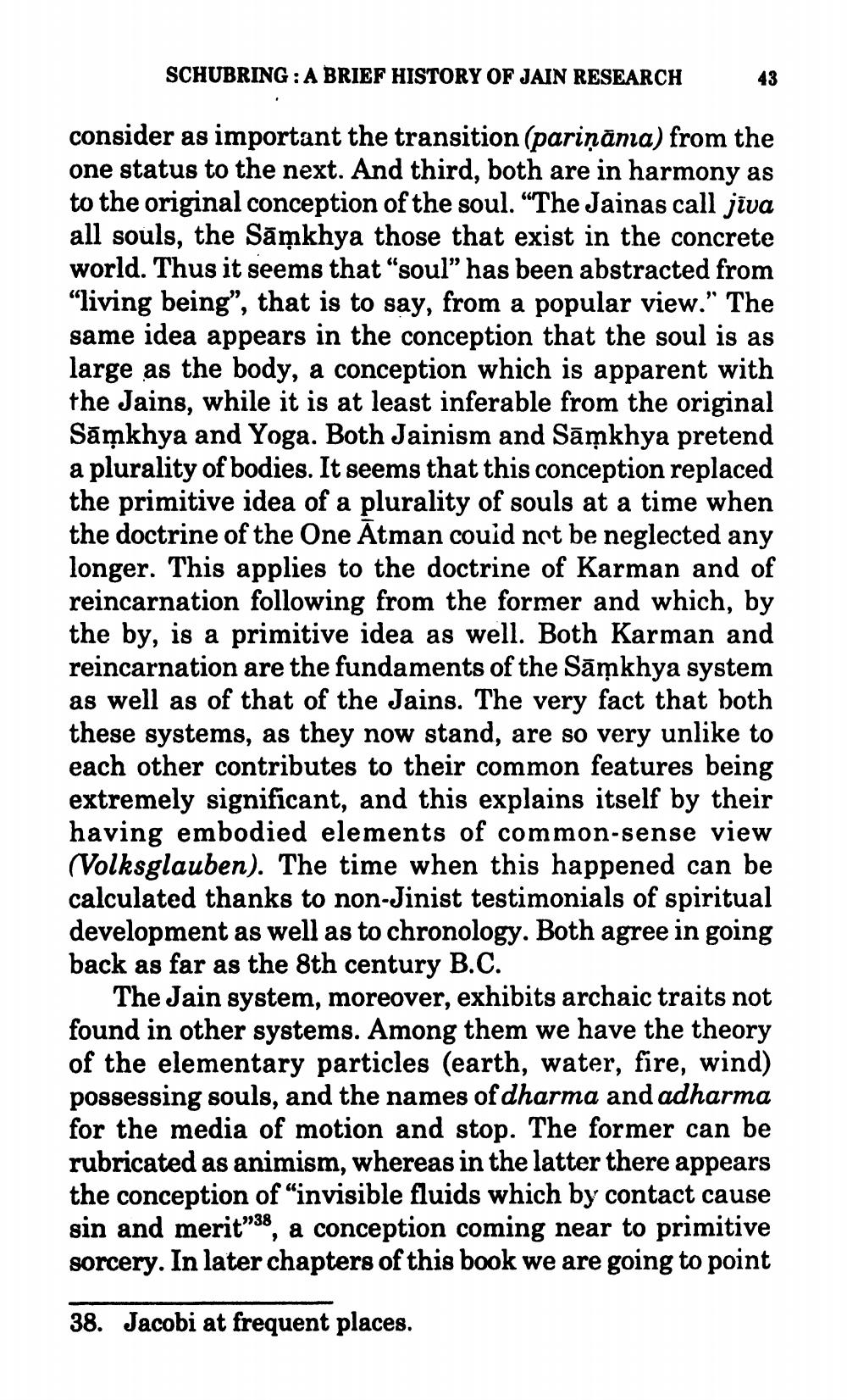________________
SCHUBRING : A BRIEF HISTORY OF JAIN RESEARCH
-
43
consider as important the transition (pariņāna) from the one status to the next. And third, both are in harmony as to the original conception of the soul. “The Jainas call jiva all souls, the Sāņkhya those that exist in the concrete world. Thus it seems that "soul" has been abstracted from "living being", that is to say, from a popular view." The same idea appears in the conception that the soul is as large as the body, a conception which is apparent with the Jains, while it is at least inferable from the original Sămkhya and Yoga. Both Jainism and Sāņkhya pretend a plurality of bodies. It seems that this conception replaced the primitive idea of a plurality of souls at a time when the doctrine of the One Ātman couid not be neglected any longer. This applies to the doctrine of Karman and of reincarnation following from the former and which, by the by, is a primitive idea as well. Both Karman and reincarnation are the fundaments of the Sāņkhya system as well as of that of the Jains. The very fact that both these systems, as they now stand, are so very unlike to each other contributes to their common features being extremely significant, and this explains itself by their having embodied elements of common-sense view (Volksglauben). The time when this happened can be calculated thanks to non-Jinist testimonials of spiritual development as well as to chronology. Both agree in going back as far as the 8th century B.C.
The Jain system, moreover, exhibits archaic traits not found in other systems. Among them we have the theory of the elementary particles (earth, water, fire, wind) possessing souls, and the names of dharma and adharma for the media of motion and stop. The former can be rubricated as animism, whereas in the latter there appears the conception of “invisible fluids which by contact cause sin and merit”38, a conception coming near to primitive sorcery. In later chapters of this book we are going to point
38. Jacobi at frequent places.




